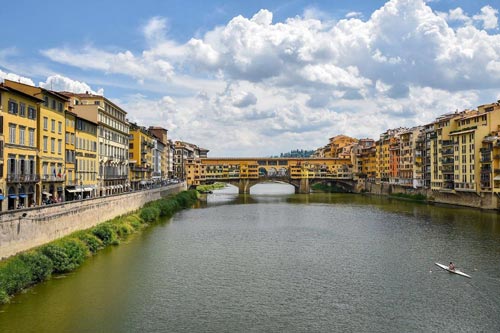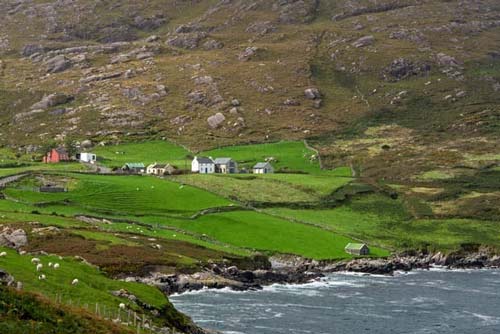Argentina should be one of the richest nations on earth.
It’s blessed with extraordinary natural resources, excellent demographics, and enormous swaths of productive land. But through generations of bad policy decisions and endemic corruption, it became trapped in perpetual economic chaos, with regular currency crises and bouts of hyperinflation.
Enter Javier Milei.
Elected president in 2023, Milei is the most disruptive force in Argentinian politics for generations. A self-described anarcho-capitalist, he’s introduced wide-ranging reforms to shake Argentina out of this cycle of constant economic crisis, and the early results have been impressive.
Inflation has collapsed from nosebleed levels. The government’s posted a fiscal surplus. Real estate transactions in Buenos Aires are picking up.
Which raises a question: Is there an opportunity in Argentina?
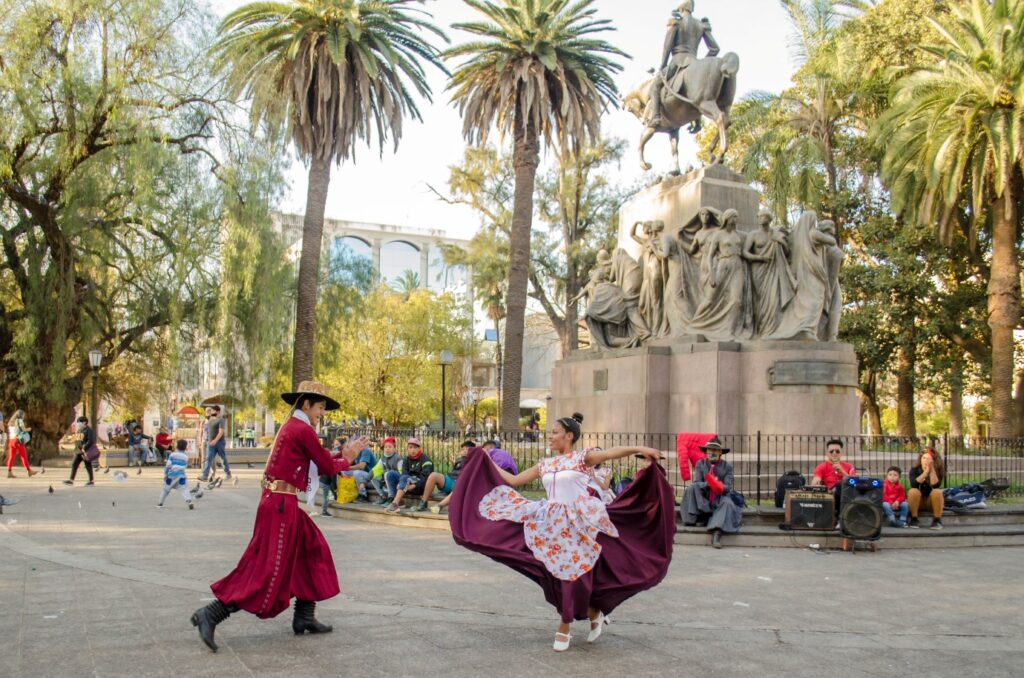
A couple dances the traditional zamba in Salta, Argentina’s Plaza 9 de Julio.
That’s why I asked Real Estate Trend Alert (RETA) member and seasoned global investor Kim Iskyan to put boots on the ground there to investigate.
Kim’s a veteran global investment analyst and writer who’s spent much of his career—and life—abroad, dissecting markets and opportunities in real time.
In late August and September, he traveled to Argentina and scouted its capital, Buenos Aires…the charming colonial city of Salta…and the off-grid community of Cafayate…
You can read his thoughts on Buenos Aires here.
Today, Salta…
Salta is 800 miles north of Buenos Aires, a lovely colonial city of 500,000 people. What struck Kim immediately was the vibe: laid-back and chill, in a manageable, light-traffic friendly colonial city.
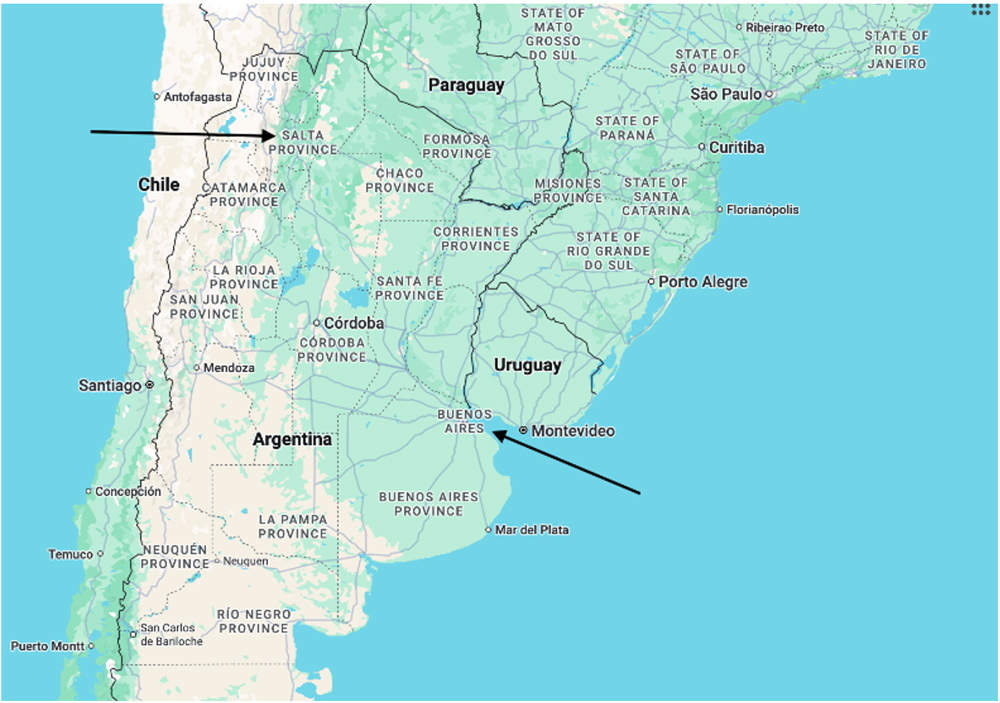
The city of Salta is in the northwest of Argentina—about two hours from Buenos Aires by plane.
The flight from Buenos Aires takes just over two hours—and it’s like traveling to another planet. Forget European-style boulevards and the aura of the old country. In their place: colonial architecture, indigenous markets, and stunning Andean landscapes that are Utah meets New Mexico—on steroids.
Salta’s Real Estate Market
Salta’s historic center—like many in the South American continent—is a large square that’s the focal point, featuring a park, plenty of restaurants, and people out for a paseo (stroll) at all hours of the day. And then of course there’s the church on the main plaza, as well as another church nearby that—a salteño told me—has the tallest belltower on the continent.
Kim didn’t see many foreigners in Salta—a theme of his visit to Argentina—but along with a handful of other cities (including Mendoza, Bariloche and of course Buenos Aires) it does attract expats.
Outside of the central plaza, Salta features streets with beautiful colonial-style buildings with intricate facades and original tilework. And grand houses in the best parts of town—are available for half to two-thirds of Buenos Aires costs.
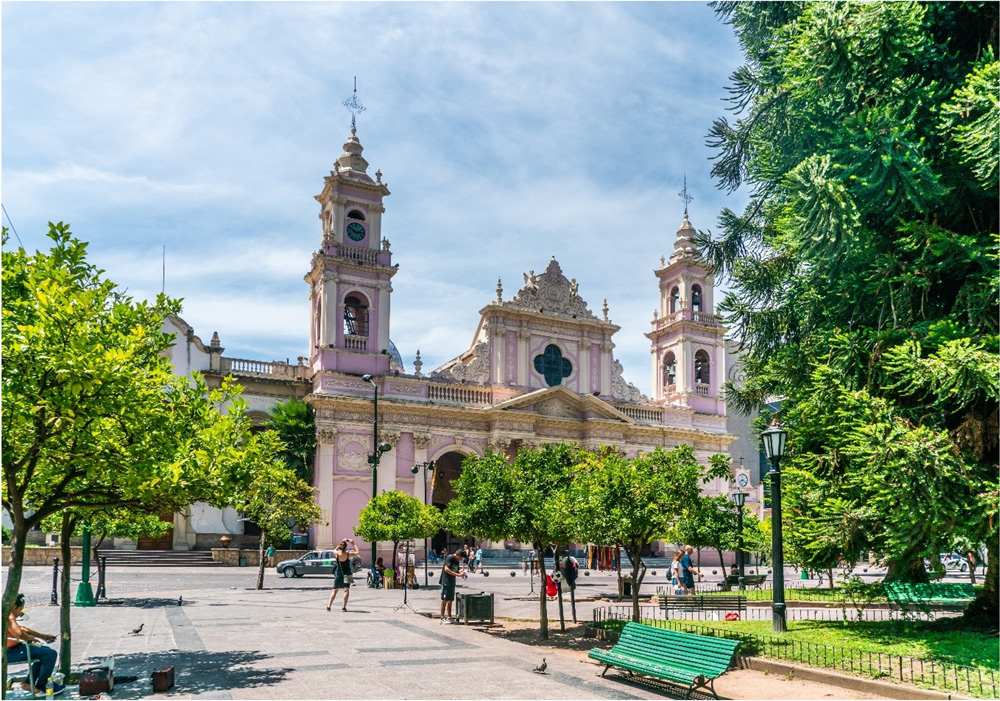
The cathedral in Salta. The city is known for its bright colonial architecture.
Kim’s favorite is a house which features 4,600 square feet of rich wood, original tiling, and a dining room where King Arthur would feel at home. The bathrooms, and bedrooms, are enormous. The original tiles in the interior courtyard harken back to a bygone era. For just over $100 per square foot (and $500,000 for the whole house), in one of the most happening parts of the city—with bars and restaurants within steps—feels like a bargain.
In a similar vein, though not quite as grand (except for the lovely courtyard featuring a fountain) was a house, in a quieter part of town. The house itself is large, at 3,885 square feet, with a big backyard that the real estate agent said could be used to build an addition or separate building—as a granny flat, or a small apartment building, or anything else. At $370,000—though down from $500,000—its price still has some way to fall.
Opus Dei, part of the Catholic church, has used this property which is a massive 7,000 square feet and has nine rabbit-warren bedrooms, many of them en suite—as a residential training facility. It comes with a chapel, featuring priest’s quarters and a dozen or so pews, and an industrial kitchen and a large laundry room. The vibe is somber, but an inexpensive spruce-up could lighten the mood.
These houses are ideal if you’ve got a Brady Bunch-sized family, or want multiple generations under the same roof. For the rest of us, though, one play is boutique hotels. Salta’s growing tourism industry—driven partly by its position as gateway to wine regions and Andean highlands—creates demand for unique accommodations. A renovated colonial mansion with 8-10 rooms could be a great business.
Alternatively: office conversion. Salta’s growing professional class needs modern workspace, and these colonial buildings offer character that could command premium rents.
But these aren’t passive investments. They require vision, significant capital, and hands-on management. They’re more lifestyle projects than pure financial plays.
And for more traditional rental income, Salta offers pozos priced within 10% to 20% of Buenos Aires projects. The math seems attractive until you dig deeper: rental yields are lower because Salta’s rental market, while stable, lacks Buenos Aires’s depth and pricing power.
“You’re paying almost Buenos Aires prices for provincial yields,” a local developer told Kim. “It only works if you really want to live here.”
Kim produced a full report on his scouting in Argentina, which I shared with RETA members. It includes listings to all the above.
Join RETA here to unlock access to this report and a wealth of other real estate research…
Wishing you good real estate investing,

P.S. Boots-on-the-ground scouting reports are just one benefit of RETA membership. The biggest advantage of being a RETA member is access to our exclusive, off-market deals. You can learn more about RETA membership here.
